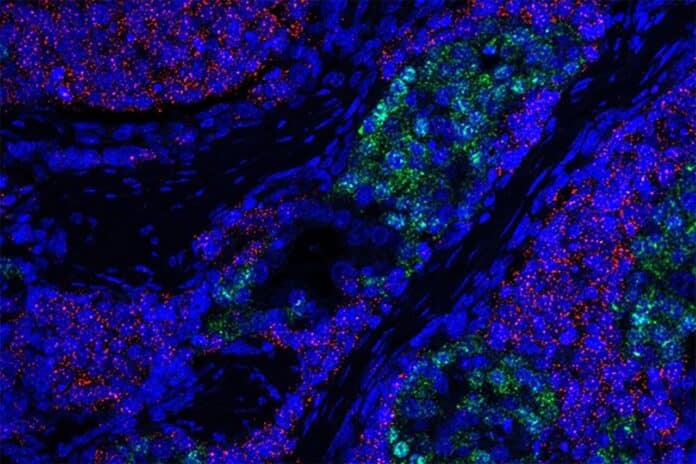Cancers can become more aggressive as they grow and spread in the body. This can happen faster during treatment when they become resistant to drugs. In prostate cancers, some can turn into a rare and hard-to-treat tumor called small cell neuroendocrine (SCN) cancer.
Researchers have now observed and explained the molecular changes that turn common prostate cancer into SCN cancer. Understanding this process better could help develop new treatments to stop SCN prostate cancers from forming.
Dr. Owen Witte, who co-led the new research with Thomas Graeber. Both researchers are members of the UCLA Eli and Edythe Broad Center of Regenerative Medicine and Stem Cell Research, and Jonsson Comprehend said, “For the first time, we have a real opportunity to define the process that leads these very, very aggressive tumors,”
SCN cancers are a small percentage of new prostate cancer cases. However, they are more likely to appear in tumors growing after treatment. These cancers are fast-growing and hard to treat. Although researchers know the molecular differences between common prostate and SCN cancers, how these changes happen hasn’t been fully understood.
Graeber said, “Until now, we didn’t have a concrete timeline on how these small cell neurodendocrine cancers arose, so it has been tough to design approaches to treat them in the clinic.”
In a recent study published in Cancer Cell, researchers used a model where healthy human prostate cells were placed in mice and transformed into adenocarcinomas and then SCN cancers.
Olga Chia-Chun Chen, a graduate student at UCLA, explained, “We started with normal cells and tracked their progression, giving us a unique ability to see exactly what was happening at each stage.’ The team collected tumor biopsies every two weeks for at least ten weeks, analyzing the genetic changes over time.”
Despite many differences between prostate adenocarcinomas and SCN cancers, they discovered that prostate adenocarcinomas followed two predictable paths to become SCN cancers. The study also found similar paths in some lung cancers progressing into SCN cancers.
The discovery that there are only two significant pathways for prostate cancer to become more aggressive was surprising to the researchers. This finding is promising for developing treatments because it’s easier to block two pathways than hundreds,” explained Graeber.
The researchers plan to study ways to block these pathways in the future. Some of the critical molecular changes they identified could be targeted with drugs. Instead of trying to treat advanced SCN prostate or lung cancers, the researchers suggest that drugs could be used to stop the progression of less aggressive types, preventing the development of SCN cancers.
“In essence, if we can predict that a cancer is becoming more aggressive, maybe we can stop it,” said Witte
UCLA’s research provides a crucial step forward in understanding the aggressive growth of prostate cancers and their ability to evade treatment. The identification of predictable pathways offers hope for the development of targeted therapies, potentially transforming the landscape of prostate cancer treatment and prevention.
Journal reference:
- Chia-Chun Chen, Wendy Tran, et al., Temporal evolution reveals bifurcated lineages in aggressive neuroendocrine small cell prostate cancer trans-differentiation. Cancer Cell. DOI: 10.1016/j.ccell.2023.10.009.
